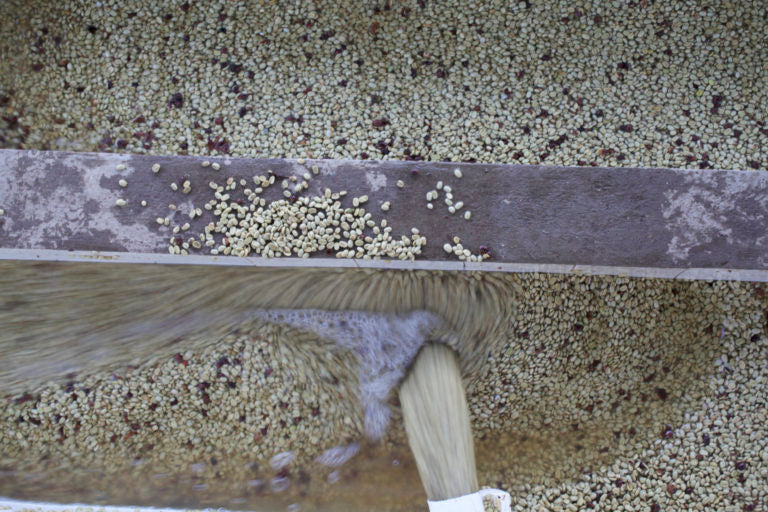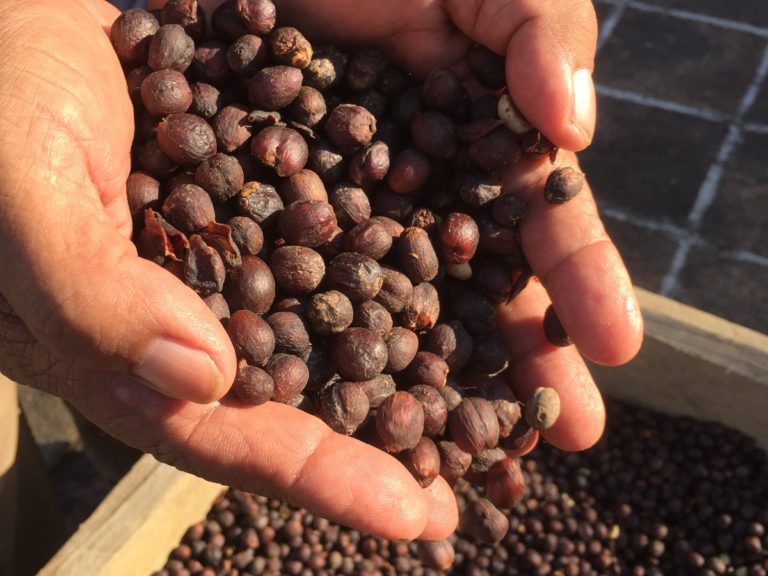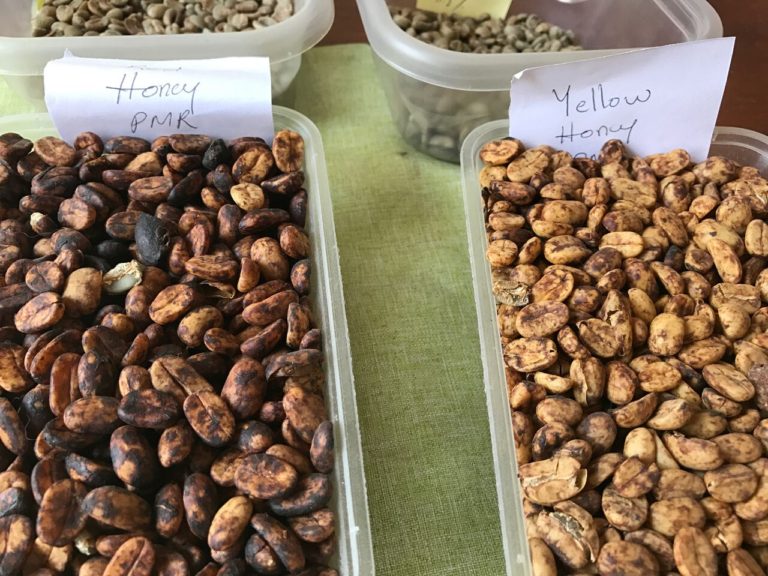
Coffee Processing: An Introduction
By Chuck Patton, former Green Coffee Buyer
Coffee farming is tough work, but growing coffee from seed to harvest is only part of the job. Once the coffee is harvested, the real work starts: processing.
Processing coffee is the act of removing the layers of skin, pulp, mucilage, and parchment that surround a coffee bean—the raw ingredient that the farmer will sell. How a grower chooses to process the coffee will have a profound impact on how that coffee tastes.
Given that we consistently offer coffees that have gone through several different processing techniques, we thought it might be helpful to go over what these techniques are and how they affect the flavor of the coffee. While there are several ways to process coffee, with countless variations of each, I will stick to the main ones we usually carry, plus a few interesting twists on traditional methods that we regularly have in stock from some of the talented Direct Trade partners that we work with.
Washed/Wet Processed

Coffee parchment being washed. | 📷: Jeff Taylor
Most of the coffee we sell is “washed,” or wet-processed. For this process, the freshly-harvested coffee cherries are de-pulped, which removes the skin and most of the fruit around the bean. The coffee then is placed in tanks where it is allowed to naturally ferment for 18-24 hours. This fermentation begins to break down the mucilage, which is a sugary, slimy substance that surrounds the bean.
Once the grower determines that the coffee has had enough fermentation, the coffee is washed with fresh water, stopping the fermentation process. Then the coffee is dried on raised beds or patios before resting for 60-90 days in warehouses and being shipped to us.
Natural/Dry-Processed

Coffee drying with fruit and skin intact. | 📷: Jeff Taylor
The second most common process that we carry is natural or dry-processed. Ripe cherries are laid out on a patio or on raised beds, fruit intact, and the coffee is allowed to dry slowly. Once dry, the fruit is stripped away from the bean in a depulping machine. Coffees that are dry-processed tend to be fruitier and can be very intense and berry-like.
Both PT’s and Bird Rock have offered a coffee from Ethiopia, Gedeo, which is a good example of a classic, naturally-processed coffee. This particular coffee works wonderfully as espresso, evidenced by Bird Rock’s roast winning a Gold Medal at the 2017 Golden Bean Awards.
There are differences in the cup between PT’s version and Bird Rock’s, so this is a nice opportunity to experience the effects that roasting on different machines can have on the same bean. Bird Rock uses a Loring Roaster while PT’s uses both a vintage Gothot roaster and newer Dietrich IRs. These roasters apply heat differently to the green coffee, so even though the final roast degree of the bean is the same on each roaster, the acidity, body, and complexity are altered based on how the coffee roasts.
One variation on the Natural Process is called the Wine Process. With a Wine-Processed coffee, instead of harvesting the cherries at the peak of harvest, the cherries are allowed to over-ripen on the shrub, giving them a higher concentration of sugar and a slightly fermented flavor.
Honey Process

Honey Process coffees at Loma La Gloria | 📷: Chuck Patton
Honeyed coffee has grown in popularity over the last few years, especially in countries like Costa Rica and El Salvador. For Honeyed coffee, the harvested cherries are de-pulped, then the coffee is immediately placed on beds for slow drying—bits of pulp/fruit included. Depending on how much pulp is left on the coffee, Honeyed coffee can be classified as Yellow, Red, or Black. Coffee processed in this way tends to be fruit-forward like a natural and a little creamier in mouthfeel than a washed coffee.
More Variations on a Theme:
Producers such as La Palma y El Tucán in Colombia and Finca Kilimanjaro in El Salvador have established formidable reputations in part by experimenting with unique coffee processing methods. Click here to read about some of the more interesting methods we've come across.
This is a wonderful time of year to enjoy coffee and to be in the coffee business. We usually see our best coffee coming in during the summer and fall, and this year is no exception. The variety of processing techniques we are offering right now can make for a wonderful educational experience as well!

Mayank Sharma on
Thanks for this information, it helped a lot in my assignment work.
Prajkta Kados on
Also method in coffee explain for images through
gary Stilwell on
no new washed process comes even close to the traditional methods
Lynn Mascarenhas on
Absolutely loved reading the connection of processes with the flavors.
Robin Vos on
Great article PT’S. would love to cup the differences between the last mentioned Ethiopia & Burundi style. Keep up the great work!